Day 103: Curonion Spit
Date: 13 DEC 2008
The Curonian Spit, with an average height of 35m, but some attain the height of 60m, is home to the highest moving (drifting) sand dunes in Europe. It stretches from the Sambian Peninsula on the south to its northern tip next to a narrow strait, across which is the port city of Klaipėda on the mainland of Lithuania. The northern 52 km long stretch of the Curonian Spit peninsula belongs to Lithuania, while the rest is part of the Kaliningrad Oblast, Russia. The width of the spit varies from a minimum of 400 m in Russia (near the village of Lesnoye) to a maximum of 3,800 m in Lithuania (just north of Nida).
So I made my way to catch the ferry over to Curonian Spit. This was where I had been staying at in Klaipeda. Egle's work place.

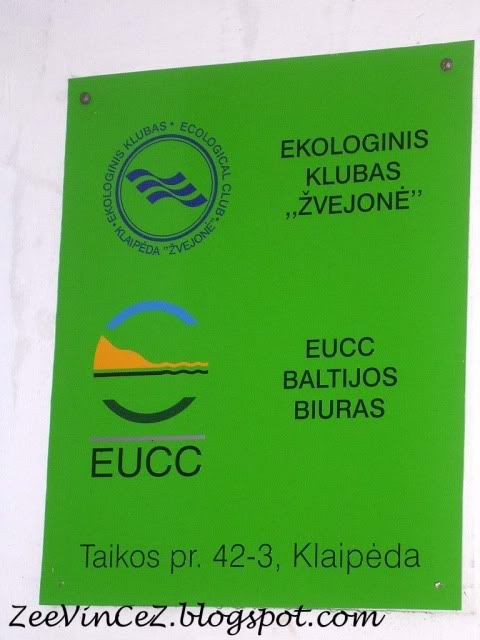
This picture was taken around the ferry terminal. It is part of the old castle.
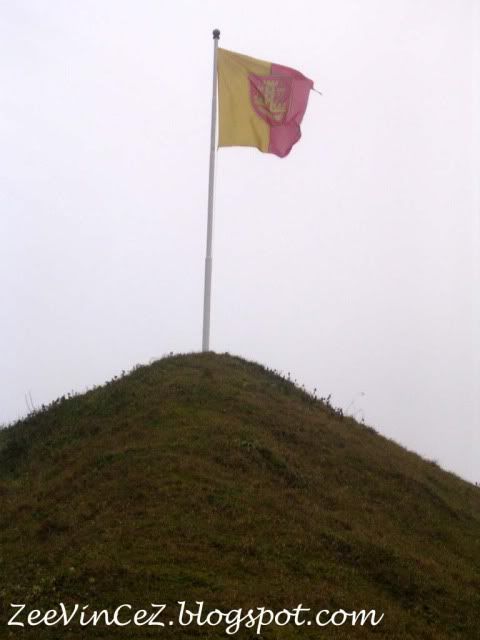
Then came the ferry, hop onto it and went across. I know that it is off season now, but people do live on the Curonian Spit. Despite this fact, I was surprise to find out that I have to wait 3 hours for the next bus to bring me the village of Nida from which I take a walk to the highest Drifting Sand Dunes in Europe.!! So I ended up going to the nearby Sea Museum to catch a dolphin and seal show to kill some time.
So here are the dolphins.
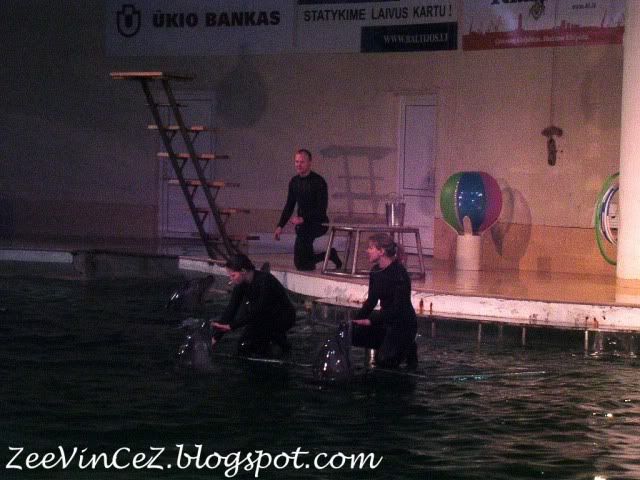
Playing with balls.
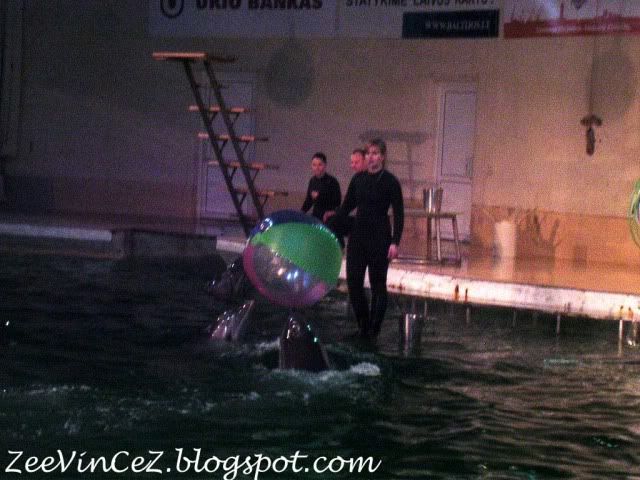
Playing with hula hoops.
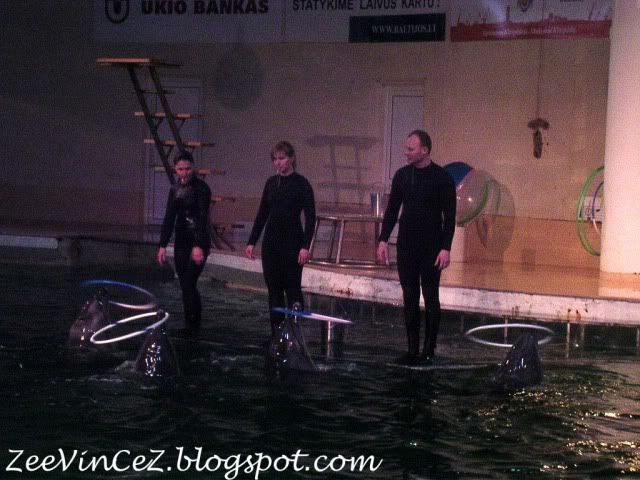
Playing basketball.
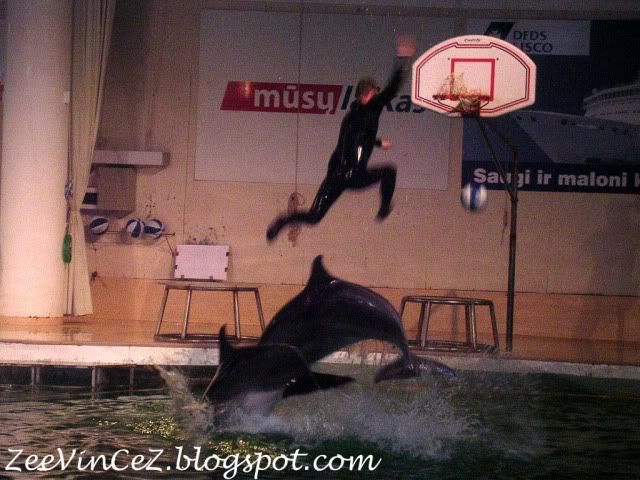
Dolphin painting.
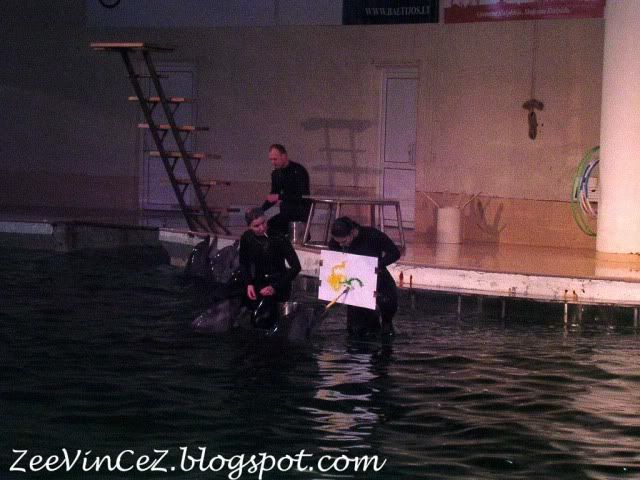
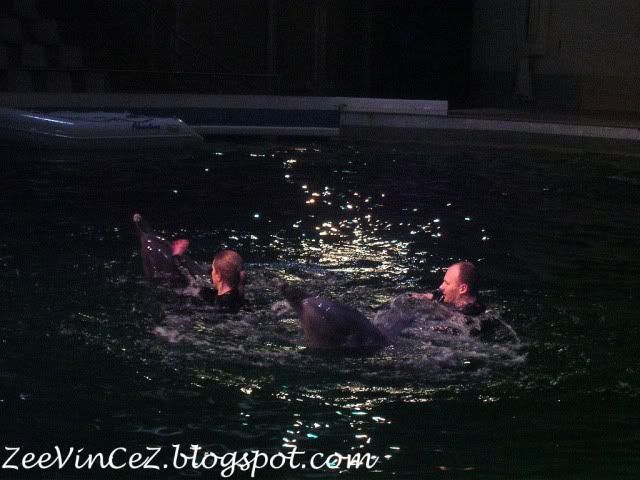
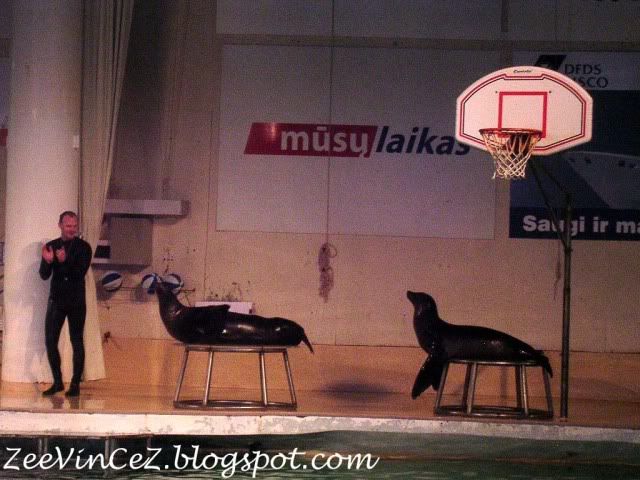
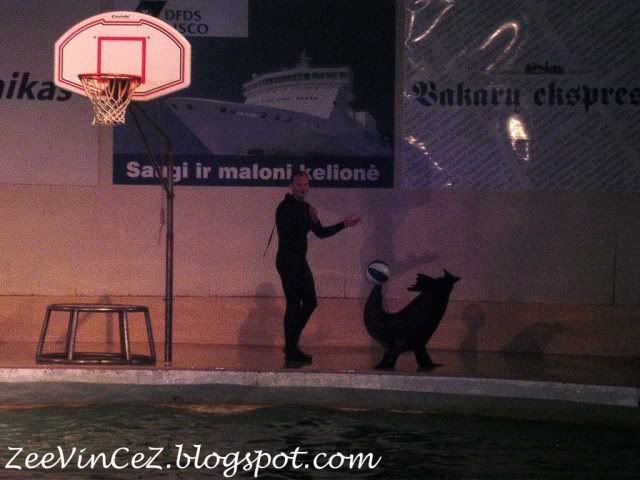
And he scores!!

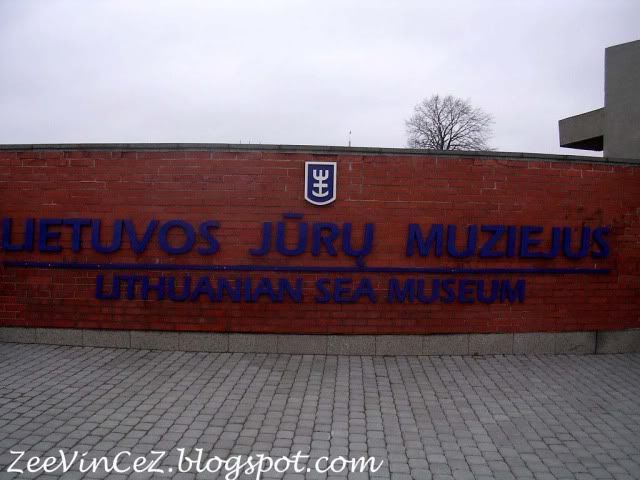
According to Baltic mythology, the Curonian Spit was formed by a giantess, Neringa, who was playing on the seashore. This child also appears in other myths (in some of which she is shown as a young strong woman, similar to a female version of the Greek Heracles).
The Curonian Spit was formed about 5,000 years ago. From ca. 800 to 1016, it was the location of Kaup, a major pagan trading centre which has not been excavated yet. The Teutonic Knights occupied the area in the 13th century, building their castles at Memel (1252), Neuhausen (1283), and at Rossitten (1372).
Human habitation of this elongated sand dune peninsula, 98 km long and 0.4-4 km wide, dates back to prehistoric times. Throughout this period it has been threatened by the natural forces of wind and waves. Its survival to the present day has been made possible only as a result of ceaseless human efforts to combat the erosion of the Spit, dramatically illustrated by continuing stabilisation and reforestation projects.
In the 16th century, a new period of dune formation began. Deforestation of the spit due to overgrazing, timber harvesting, and building of boats for the siege of Königsberg in 1757 led to the dunes taking over the spit and burying entire villages. Alarmed by these problems, the Prussian government sponsored large-scale revegetation and reforestation efforts, which started in 1825. Owing to these efforts, much of the spit is now covered with forests. In the 19th century the Curonian Spit was inhabited primarily by Curonians (Kursenieki) with a significant German minority in the south and a Lithuanian minority in the north. The population of Curonians eventually dwindled due to assimilation and other reasons; it is close to non-existent these days and even before 1945, when the spit had become totally ethnic German. Until the 20th century, most people in the area made their living by fishing. The German population was expelled after World War II.
After the breakup of the Soviet Union, tourism flourished; many Germans, mostly the descendants of the inhabitants of the area, choose the Curonian Spit (especially Nida, as no visas are needed for Germans in Lithuania) as their holiday destination.
From 2002-2005 local environmentalists in both Kaliningrad Oblast and Lithuania protested against Lukoil's plans to exploit the D6 oilfield, which is in the territorial waters of Russia 22.5 km from the Curonian Spit, due to the possible great damage to the environment and tourism (a vital source of income in the area) in case of oil leakage. These concerns did not engender support in the government of Russia. They were, however, supported by the government of Lithuania, as the oilfield is just about four km from the boundary of Lithuanian territorial waters and the prevailing northward currents means that the Lithuanian coastlines would receive a large part of potential damage in case of leakage. However, the opposition to the exploitation of D6 oilfield met little international support and the oil platform was opened in 2005.
Reforestation may have been 'sponsored' at some point by the Prussian government, but most reports state in the late 1800's George David Kuwert, the owner of a post station in Nida, began the spit’s reforestation.
Despite being on the UNESCO's world Heritage List, it was not as beautiful as I thought it would be. Maybe it has already lost most of its beauty due to the force of mother nature, or maybe I had too high expections of it.
Anyway, this was how it looked like when I was there. It has been drifting since a long time ago and had buried an entire village in sand. It is still drifting towards the sea everyday. Let's hope that enough effort had been put in to prevent it from disappearing forever.
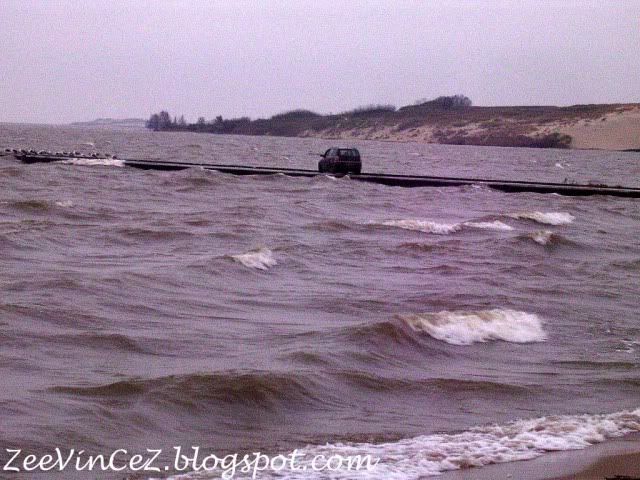
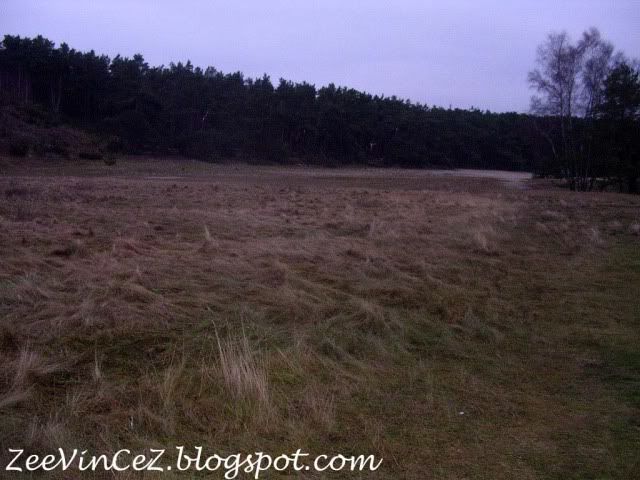
Going up the sand dunes on the official route.
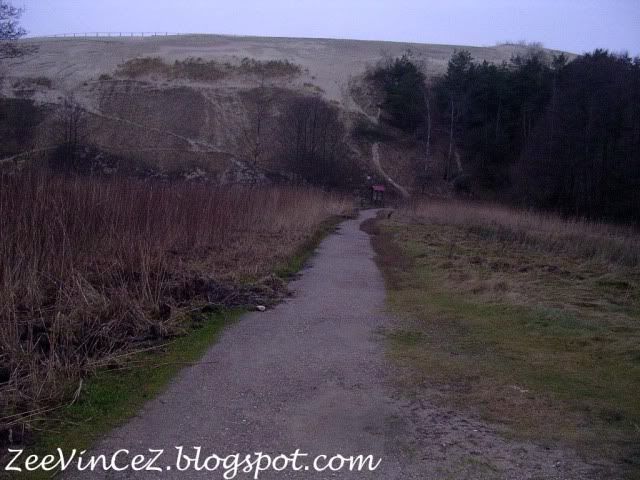

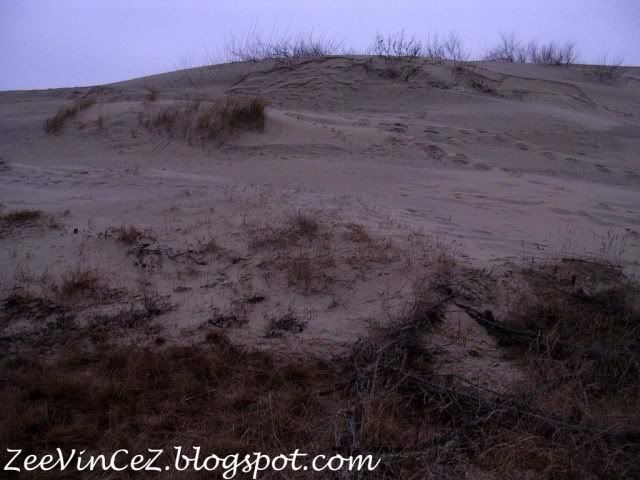
The force of nature destroyed this sundial and it was left as it is to remind all of the uncontrollable forces of nature.
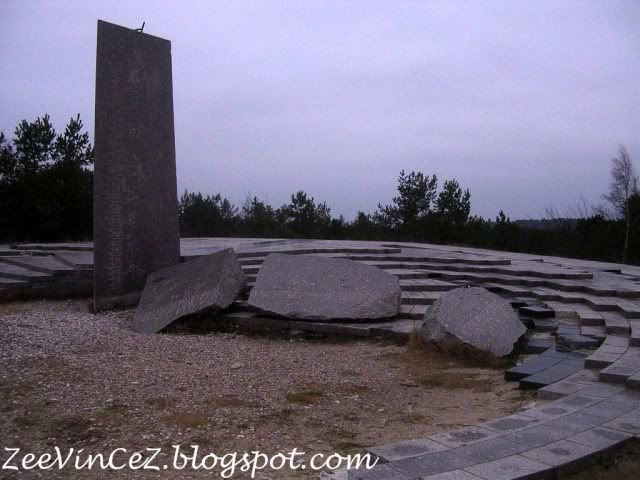
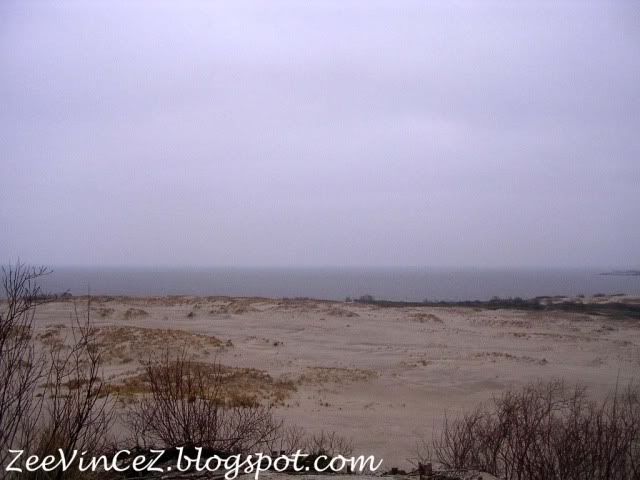
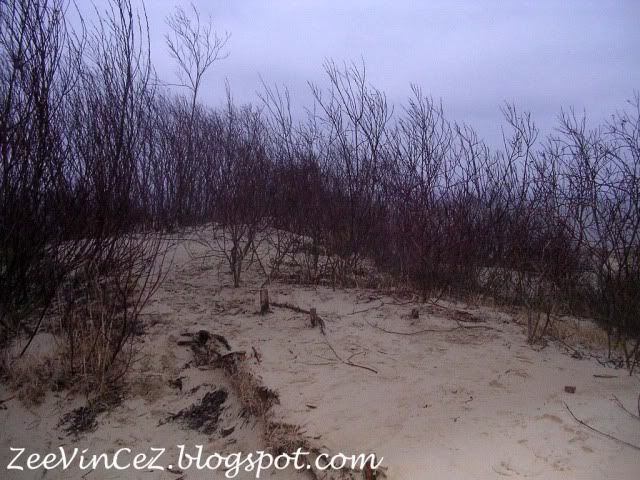
Looking into Russia.
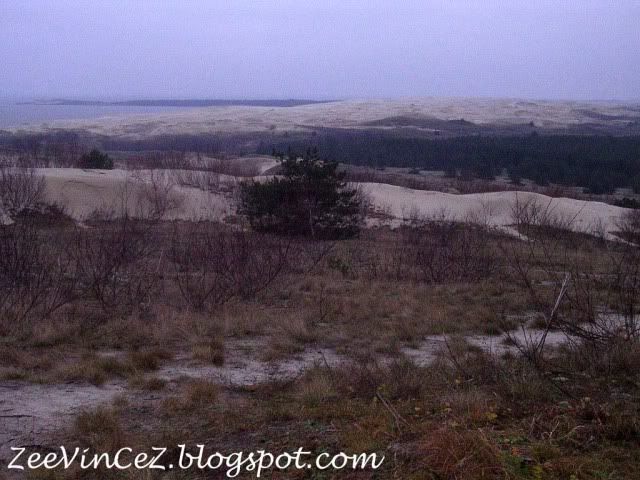
I would love to see this but I just cant find it. Maybe it is already lost.
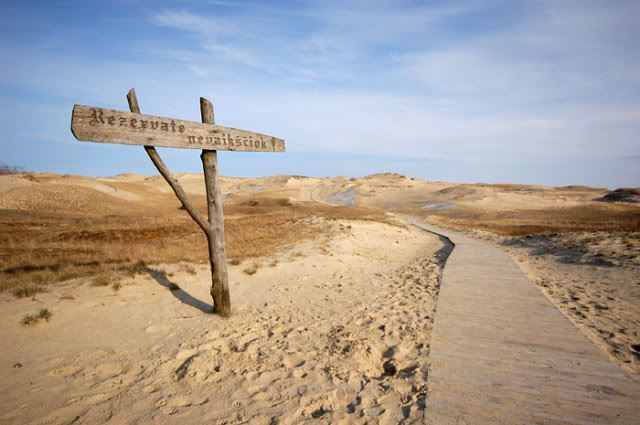
Waiting for a ferry to get back to mainland. This view reminds me of Singapore.
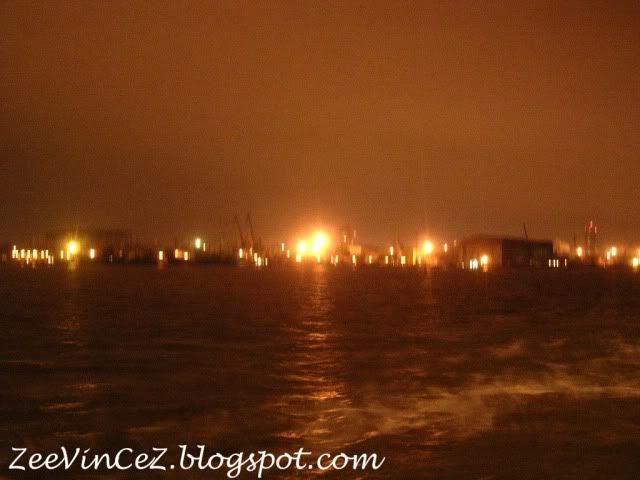
Well, I am leaving Klaipeda tomorrow and so I have to take some photos with my new found friends.

Proudly present to you, Egle, my host in Klaipeda.

*Click HERE to return to the Main Page of The Cold Journey.*
The Curonian Spit, with an average height of 35m, but some attain the height of 60m, is home to the highest moving (drifting) sand dunes in Europe. It stretches from the Sambian Peninsula on the south to its northern tip next to a narrow strait, across which is the port city of Klaipėda on the mainland of Lithuania. The northern 52 km long stretch of the Curonian Spit peninsula belongs to Lithuania, while the rest is part of the Kaliningrad Oblast, Russia. The width of the spit varies from a minimum of 400 m in Russia (near the village of Lesnoye) to a maximum of 3,800 m in Lithuania (just north of Nida).
So I made my way to catch the ferry over to Curonian Spit. This was where I had been staying at in Klaipeda. Egle's work place.


This picture was taken around the ferry terminal. It is part of the old castle.

Then came the ferry, hop onto it and went across. I know that it is off season now, but people do live on the Curonian Spit. Despite this fact, I was surprise to find out that I have to wait 3 hours for the next bus to bring me the village of Nida from which I take a walk to the highest Drifting Sand Dunes in Europe.!! So I ended up going to the nearby Sea Museum to catch a dolphin and seal show to kill some time.
So here are the dolphins.

Playing with balls.

Playing with hula hoops.

Playing basketball.

Dolphin painting.




And he scores!!


According to Baltic mythology, the Curonian Spit was formed by a giantess, Neringa, who was playing on the seashore. This child also appears in other myths (in some of which she is shown as a young strong woman, similar to a female version of the Greek Heracles).
The Curonian Spit was formed about 5,000 years ago. From ca. 800 to 1016, it was the location of Kaup, a major pagan trading centre which has not been excavated yet. The Teutonic Knights occupied the area in the 13th century, building their castles at Memel (1252), Neuhausen (1283), and at Rossitten (1372).
Human habitation of this elongated sand dune peninsula, 98 km long and 0.4-4 km wide, dates back to prehistoric times. Throughout this period it has been threatened by the natural forces of wind and waves. Its survival to the present day has been made possible only as a result of ceaseless human efforts to combat the erosion of the Spit, dramatically illustrated by continuing stabilisation and reforestation projects.
In the 16th century, a new period of dune formation began. Deforestation of the spit due to overgrazing, timber harvesting, and building of boats for the siege of Königsberg in 1757 led to the dunes taking over the spit and burying entire villages. Alarmed by these problems, the Prussian government sponsored large-scale revegetation and reforestation efforts, which started in 1825. Owing to these efforts, much of the spit is now covered with forests. In the 19th century the Curonian Spit was inhabited primarily by Curonians (Kursenieki) with a significant German minority in the south and a Lithuanian minority in the north. The population of Curonians eventually dwindled due to assimilation and other reasons; it is close to non-existent these days and even before 1945, when the spit had become totally ethnic German. Until the 20th century, most people in the area made their living by fishing. The German population was expelled after World War II.
After the breakup of the Soviet Union, tourism flourished; many Germans, mostly the descendants of the inhabitants of the area, choose the Curonian Spit (especially Nida, as no visas are needed for Germans in Lithuania) as their holiday destination.
From 2002-2005 local environmentalists in both Kaliningrad Oblast and Lithuania protested against Lukoil's plans to exploit the D6 oilfield, which is in the territorial waters of Russia 22.5 km from the Curonian Spit, due to the possible great damage to the environment and tourism (a vital source of income in the area) in case of oil leakage. These concerns did not engender support in the government of Russia. They were, however, supported by the government of Lithuania, as the oilfield is just about four km from the boundary of Lithuanian territorial waters and the prevailing northward currents means that the Lithuanian coastlines would receive a large part of potential damage in case of leakage. However, the opposition to the exploitation of D6 oilfield met little international support and the oil platform was opened in 2005.
Reforestation may have been 'sponsored' at some point by the Prussian government, but most reports state in the late 1800's George David Kuwert, the owner of a post station in Nida, began the spit’s reforestation.
Despite being on the UNESCO's world Heritage List, it was not as beautiful as I thought it would be. Maybe it has already lost most of its beauty due to the force of mother nature, or maybe I had too high expections of it.
Anyway, this was how it looked like when I was there. It has been drifting since a long time ago and had buried an entire village in sand. It is still drifting towards the sea everyday. Let's hope that enough effort had been put in to prevent it from disappearing forever.


Going up the sand dunes on the official route.



The force of nature destroyed this sundial and it was left as it is to remind all of the uncontrollable forces of nature.



Looking into Russia.

I would love to see this but I just cant find it. Maybe it is already lost.

Waiting for a ferry to get back to mainland. This view reminds me of Singapore.

Well, I am leaving Klaipeda tomorrow and so I have to take some photos with my new found friends.

Proudly present to you, Egle, my host in Klaipeda.

*Click HERE to return to the Main Page of The Cold Journey.*

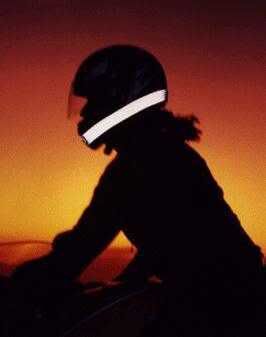

1 Comments:
Greetings! I've been following your weblog for a long time now and finally got the courage to go ahead and give you a shout out from New Caney Tx! Just wanted to mention keep up the great job!
Also visit my site :: http://elewacjedrewniane.pl/
Post a Comment
<< Home